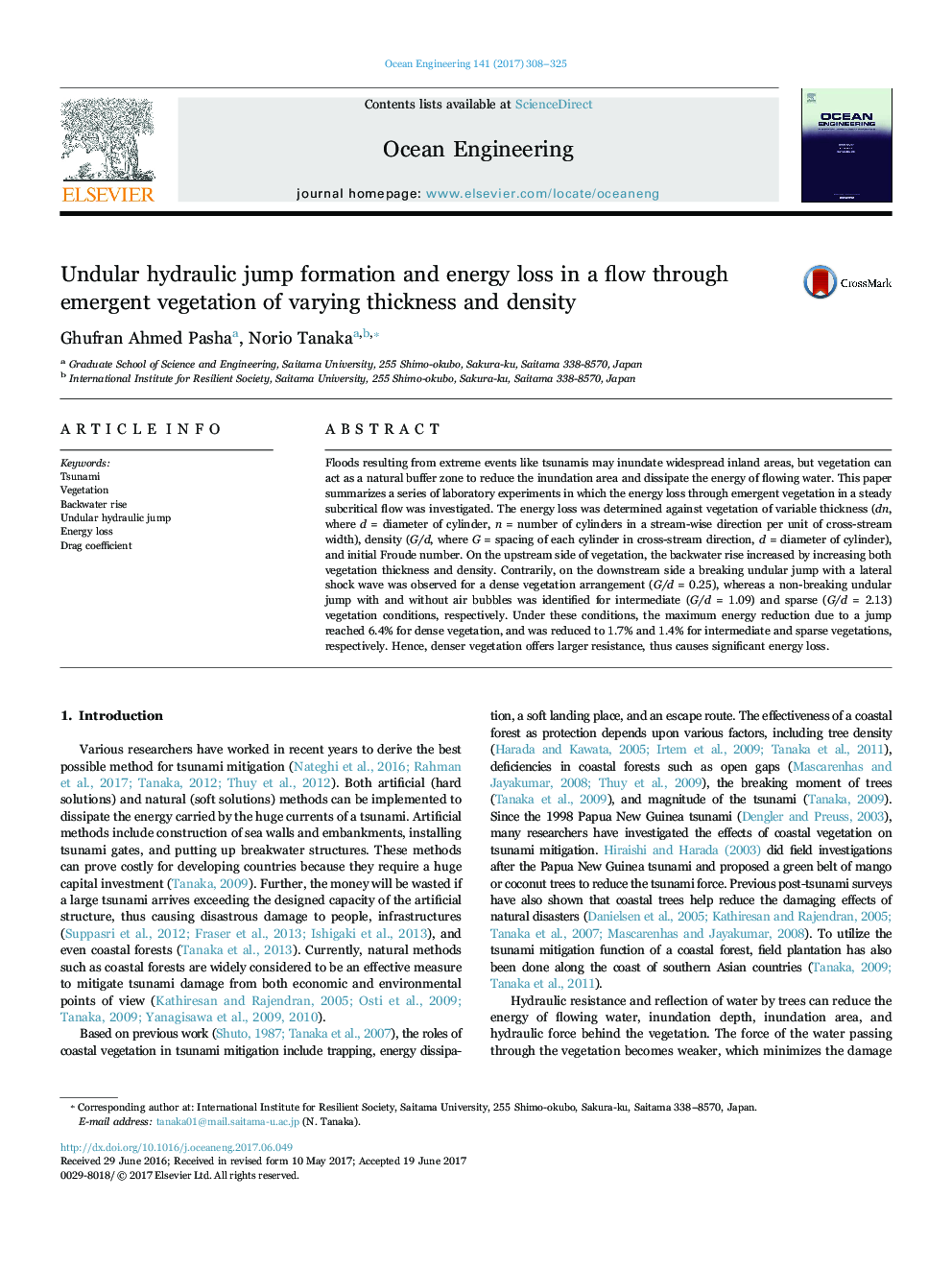| Article ID | Journal | Published Year | Pages | File Type |
|---|---|---|---|---|
| 5474431 | Ocean Engineering | 2017 | 18 Pages |
Abstract
Floods resulting from extreme events like tsunamis may inundate widespread inland areas, but vegetation can act as a natural buffer zone to reduce the inundation area and dissipate the energy of flowing water. This paper summarizes a series of laboratory experiments in which the energy loss through emergent vegetation in a steady subcritical flow was investigated. The energy loss was determined against vegetation of variable thickness (dn, where d = diameter of cylinder, n = number of cylinders in a stream-wise direction per unit of cross-stream width), density (G/d, where G = spacing of each cylinder in cross-stream direction, d = diameter of cylinder), and initial Froude number. On the upstream side of vegetation, the backwater rise increased by increasing both vegetation thickness and density. Contrarily, on the downstream side a breaking undular jump with a lateral shock wave was observed for a dense vegetation arrangement (G/d = 0.25), whereas a non-breaking undular jump with and without air bubbles was identified for intermediate (G/d = 1.09) and sparse (G/d = 2.13) vegetation conditions, respectively. Under these conditions, the maximum energy reduction due to a jump reached 6.4% for dense vegetation, and was reduced to 1.7% and 1.4% for intermediate and sparse vegetations, respectively. Hence, denser vegetation offers larger resistance, thus causes significant energy loss.
Related Topics
Physical Sciences and Engineering
Engineering
Ocean Engineering
Authors
Ghufran Ahmed Pasha, Norio Tanaka,
